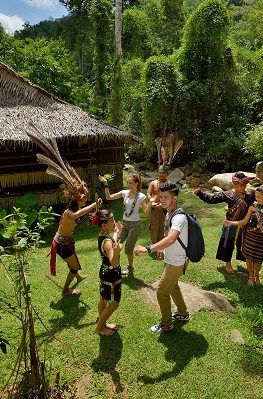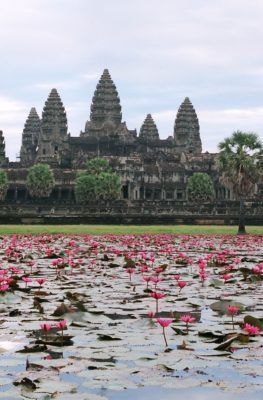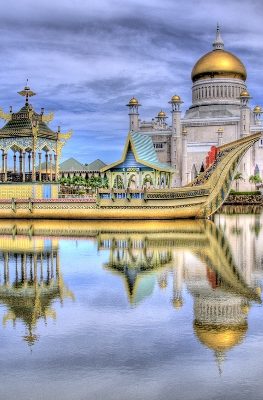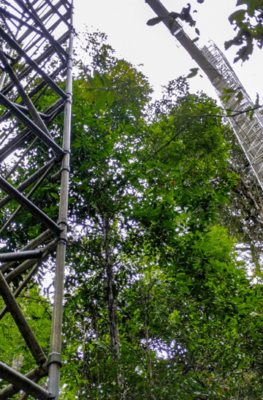Published on July 5, 2015
“Baby boomers” – today’s traveling seniors – practically discovered Southeast Asia travel for the West. Boomers discovered Bali’s surfing. Boomers opened up Indochina. And boomers invented the backpacker hostels that now crop up at every top Southeast Asia city.
Now that boomers are retired with spending money to spare, they’re coming back to Southeast Asia in droves. But they’re not traveling the way that they did when they were younger – these days, they’re looking for different things. And now as before, the region still delivers what they want.
What do these traveling seniors look for in a travel destination – and how does Southeast Asia deliver?

Malacca River quayside. Image © Mike Aquino, used with permission.
Authenticity. “[Traveling seniors] tend to be well-traveled, and so they seek travel opportunities that go beyond the standard tour stops,” explains Nancy Parode, About.com’s resident Expert for Senior Travel.”They’re looking for unique places and for ways to really connect with the local culture, whether that be by taking off-the-main-path journeys, volunteering or staying for longer than a week in a single destination.”
Southeast Asia is full of destinations that allow travelers to tap directly into the local culture, but not all cultures are created equal. Travelers looking for that cultural connection should visit Cambodia, where they’ll find no shortage of village homestays, ancient temples, and art performances around the countryside; or Indonesia, a sprawling country where it seems every island (almost 10,000 in all) has its own, unique culture to enjoy.
Value. Getting the most bang for their buck is essential for traveling seniors – “not necessarily because they have super-small travel budgets, but because they want to keep traveling as long as they possibly can,” Nancy explains. “In the case of the seniors who grew up during the Great Depression, frugality has always been important to them.”
While low cost travel has always been the hallmark of Southeast Asia (no wonder it’s a backpacker’s haven!), senior travelers have found that the region delivers its greatest value via medical tourism and as a retirement destination.

Westerners joining a Thai festival. Image courtesy of Tourism Authority of Thailand, used with permission.
The Philippines has become one of Southeast Asia’s top retirement destinations – over 27,000 foreign retirees from 107 countries (as of 2013) have taken advantage of the country’s Special Resident Retirees Visa to enjoy their golden years at a comfortable cost. Malaysia, on the other hand, has leveraged its relatively low medical costs become a regional leader in medical tourism, with the number of medical tourists breaching the 1 million mark in 2013.
Safety and sanitation. “Seniors heading to Southeast Asia are concerned about keeping themselves safe and protecting their travel documents and money,” Nancy says. Food safety is also paramount: “Some senior travelers are very adventurous when it comes to food, but others worry about what they’ll eat once they are at their destination – in Southeast Asia or elsewhere – and whether the drinking water is safe.”
Singapore has solved the food safety problem in one fell swoop, by efficiently regulating their street food vendors. The country’s famous “hawker centers” number about 113 government owned places and at least twice as many privately owned ones; all of them undergo the strictest scrutiny from inspectors, but that has not seemed to prevent the hawkers from producing some of the most delicious food in the region.
More and more places in Southeast Asia hit the sweet spot in more than one of the values enumerated above.
Thailand, for example, delivers plenty where value, authenticity and safety are concerned. Once the sole preserve of the young backpacker, Thailand has become something of a must-see for seniors, given the country’s wide range of accommodations, easy-to-reach tourist destinations ranging from jungle to beach to temple, and spectacular street food scene.

Danang Beach, Vietnam. Image courtesy of the Vietnam National Administration of Tourism, used with permission.
Vietnam has historically appealed to war veteran senior travelers, but this country’s appeal has expanded thanks to the rapid development of its beaches, historical sites and natural wonders (the world’s largest cave is in Vietnam – and is unsurprisingly booked solid for the next two years).
What do you look for in a senior-friendly destination? Whatever you have in mind, you’ll certainly find it somewhere in Southeast Asia.






